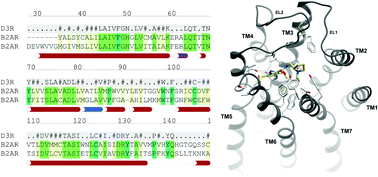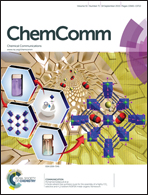Expanding the horizons of G protein-coupled receptor structure-based ligand discovery and optimization using homology models
Abstract
With >800 members in humans, the G protein-coupled receptor (GPCR) super-family is the target for more than 30% of the marketed drugs. The recent boom in GPCR crystallography has enabled the solution of ∼30 different GPCR structures, which boosted the identification and optimization of novel modulators and new chemical entities through structure-based strategies. However, the number of available structures represents a small part of the human GPCR druggable target space, and its complete coverage in the near future seems unlikely. Homology modelling represents a reliable tool to fill this gap, and hence to vastly expand the horizons of structure-based drug discovery and design. In this Feature Article, we show from a wealth of retrospective and prospective studies that in spite of the pitfalls of and standing challenges in homology modelling, structural models have been critical for the blossoming and success of GPCR structure-based lead discovery and optimization endeavours; in addition, they have also been instrumental in characterizing receptor–ligand interaction, guiding the design of site-directed mutagenesis and SAR studies, and assessing off-target effects. Considering though their current limitations, we also discuss the most pressing issues to develop more accurate homology modelling strategies, with a special focus on the integration of computational tools with biochemical, biophysical and QSAR data, highlighting methodological aspects and recent progress. The teachings of the three GPCR Dock community-wide assessments and the fresh developments in GPCR classes B, C and F are commented. This is a fast growing and highly promising field of research, and in the coming years, the use of high-quality models should enable the discovery of a growing number of potent, selective and efficient GPCR drug leads with high therapeutic potential through receptor structure-based strategies.

- This article is part of the themed collection: Identification and Optimization of GPCR Ligands in the 21st Century

 Please wait while we load your content...
Please wait while we load your content...